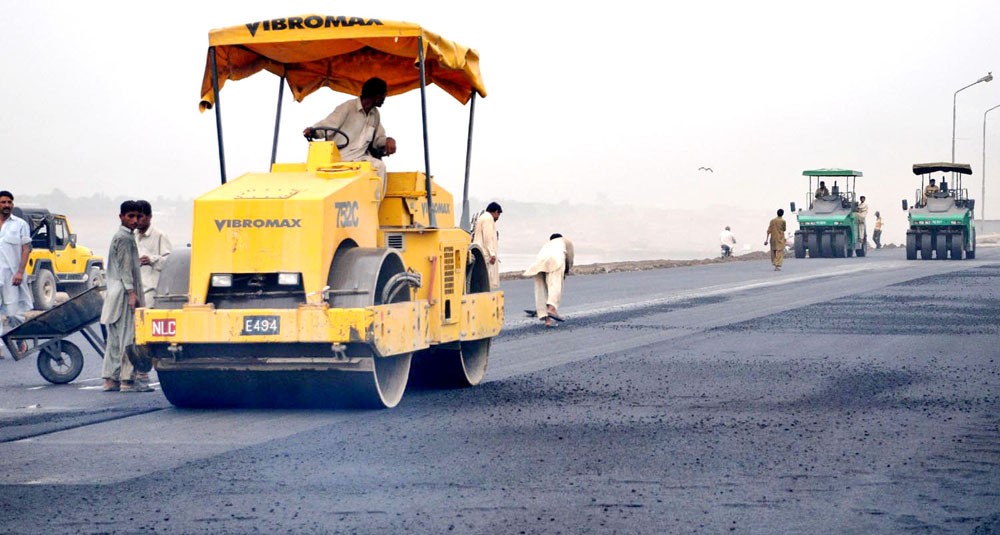
Traffic management and road development projects are not in sync with the ever-increasing road usability

Car-centric commuting has resulted in an urban sprawl, the offshoot of which is an ever increasing infrastructure of roads, flyovers and underpasses in the city.
As the trend of overburdening the network of roads goes amok, commuters’ life becomes only more difficult on a day-to-day basis as massive traffic jams occur on the roads where a newly constructed flyover or underpass ends in. Besides, of course, levels of noise and pollution continue to rise.
Though, urbanisation is inevitable in mega cities offering numerous economic benefits as well as challenges, in the case of Lahore, poor integration of land use with public transport system and irrational road management has created a complete chaos.
The total length of city roads is estimated to be 774.3 kilometers. The stretch connects to other cities through six major roads including Multan Road, Raiwind Rd, Ferozepur Rd, Burki Rd, Baidian Rd and G.T. Rd. Almost 150 roads are interlinked with one another. Thanks to urbanisation and the ever-increasing population, motorised trip on city roads has hiked up to 15 millions per day. Such heavy flow of traffic is enough to render irrelevant even the future flyovers and underpasses.
According to a study, titled ‘Transport Network Lahore City,’ carried out by T. Jamal, F. Mazhar and I. S. Kaukab of Geography Department, University of the Punjab, Lahore boasts the highest number of underpasses. Despite that, traffic at most parts of the city remains choked. It is clear that the issue is not being managed well.
When asked whether the government is obsessed about building flyovers and overheads, Israr Saeed Khan, Chief Engineer, Traffic Engineering and Planning Agency (TEPA) says that everywhere in the world flyovers play a significant role in streamlining the traffic control system. "They prevent traffic congestion and save the commuters’ time.
"Flyovers are also handy as they create an extra road space overhead, thereby reducing the use of land on the ground," he adds.
Khan goes to explain that the problem is not with such structures, "the issue is improving traffic management by wisely integrating it with road infrastructure development."
For lack of proper planning, Lahore has continued to inflate for a long time and today its area has swelled three times its original size, at 1,772 kilometers. The unbridled expansion is playing havoc with the road infrastructure system.
The city population has also crossed the 10-million figure and is growing at the rate of 3.32 percent per annum. More than the 400 legal and illegal housing societies, spread in all dimensions, have added to the density. More population means more car ownership and this will lead to a flood of traffic on the roads.
Former road engineer with the CDGL, Malik Hayat says the ever increasing number of vehicles plying on the roads is the major cause of massive congestion, traffic snarl-ups, rising cases of road accidents, slow movement, fuel wastage, time consumption and environmental hazards.
In order to revamp road management and alleviate traffic congestion, the Lahore Rapid Mass Transit (LRMT) project was proposed in the recent past. It was 97 kilometres long and had the capacity for 45,000 commuters/passengers per hour in the city. With the change of the government, the project that promised to rid the people of traffic woes was put on the backburner.
The Lahore Ring Road (LRR) is another mega project planned to share the burden of traffic on inner and outer roads. With the stretch of over 80 to 85 kilometres, it seeks to benefit almost 5.5 lac vehicles on a daily basis. Nobody knows when the ring will complete as its designs, feasibility reports, executing agencies and governments have changed more than seven times over the course of time.
The latest draw is the Lahore Metro Train project that has an estimated cost of US$1.6. Last year, President Mamnoon Hussain and his Chinese counterpart Xi Jinping inked the deal that is expected to help transit around 250,000 passengers daily. The metro train route will begin at Thokar Niaz Baig through Multan Road, Chauburji, The Mall, Laxmi Chowk, Railway Station, Garhi Shahu Bridge, GT Road, Pakistan Mint up to Dera Gujran. The total length of the project is 27.1km and its 25.4km track is said to be elevated. Surprisingly, there is no progress on the project in sight.
Transport department experts are of the view that traffic management and road development projects are not in sync with the ever-increasing road usability. Even the Lahore Metro Bus has not made much difference in easing out traffic issues. It caters only to a particular side of the city -- from Shahdara to Gajjumata.
The demand of hour is to set up an autonomous authority that would integrate all relevant departments including traffic and transport departments, LDA, TEPA and CDGL to tie the loose ends and let the people heave a sigh of relief.